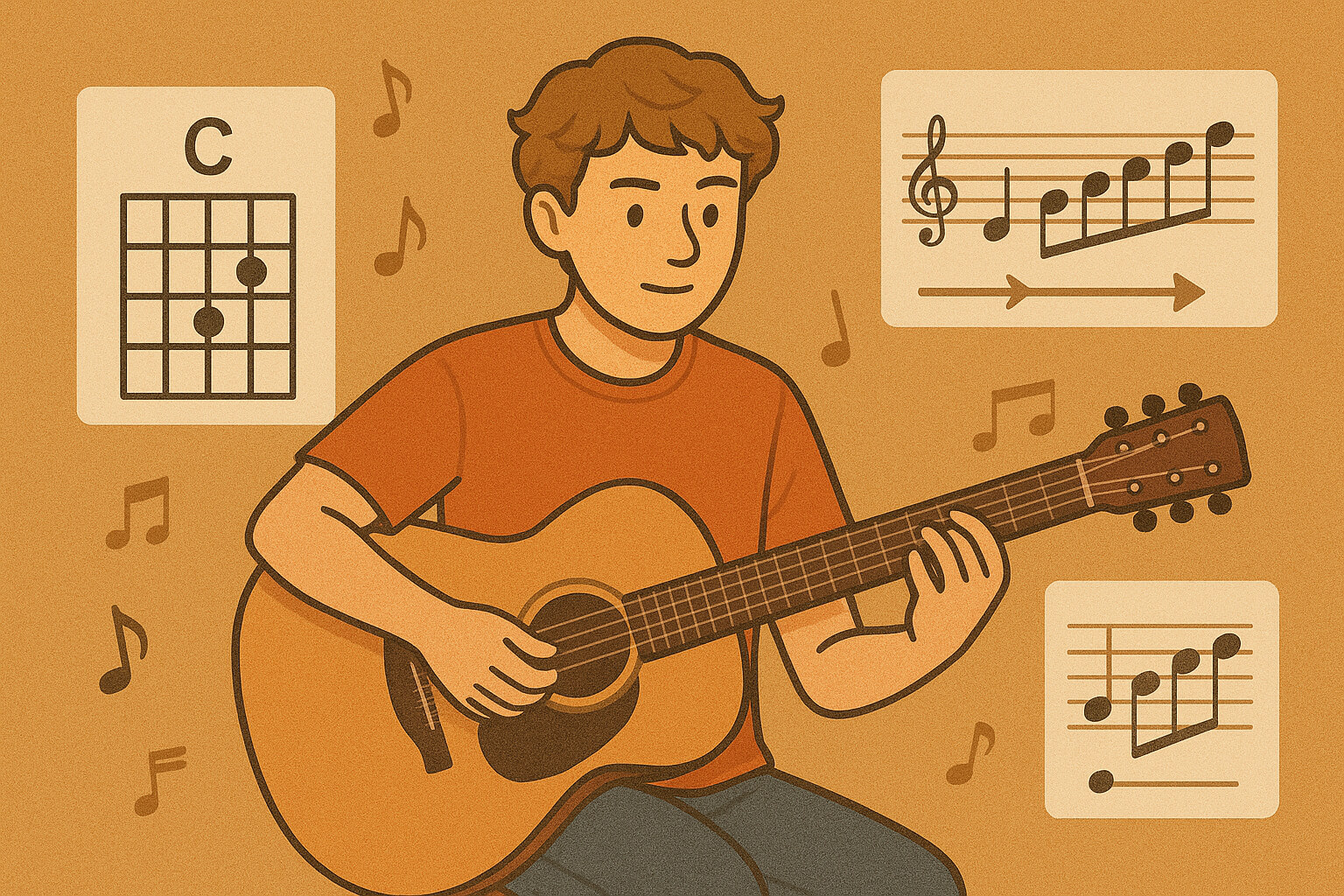August 05, 2025

Music theory can sound overwhelming—but it doesn’t have to be. You don’t need to study complex harmonics or read symphonies to start making music you love. Instead, start with the essential building blocks that will help you play, write, and understand music more confidently—even if you’re brand new.
Here’s a breakdown of practical, beginner-friendly music theory concepts that truly matter.
The backbone of all Western music is just seven letters: A, B, C, D, E, F, G. After G, the sequence repeats—like the alphabet looping back around.
Think of it like learning the alphabet before writing sentences.
Scales are ordered sets of notes that define a musical mood. They’re like emotional blueprints.
Try humming a major scale and compare it to a minor one to hear the emotional difference.
A chord is simply two or more notes played at the same time—usually three. Chord progressions are sequences of chords that form the backbone of nearly every song.
Once you learn 4–5 chords, you’ll be able to play dozens of your favorite songs.
Music is more than just notes—it’s about how those notes move in time.
Clapping along to a song helps internalize rhythm before you even pick up an instrument.
An interval is the distance between two notes—for example, from C to E is a “major third.”
Start by listening for familiar intervals: a “perfect fifth” sounds like the beginning of “Twinkle Twinkle Little Star.”
Theory isn’t just for your fingers or sheet music—it’s for your ears.
Try singing along with your instrument—it trains your ear to match pitch and rhythm naturally.
You don’t need to become a classical sight-reading master. But learning basic notation or tablature opens up a world of free tutorials and music resources.
Think of it as being able to “read” a recipe instead of cooking blindfolded.
As a beginner, you don’t need to memorize every mode or analyze Bach fugues. Focus on core, practical theory that helps you play, create, and enjoy music right now:
As you grow, the more advanced theory will start to click naturally. Let curiosity guide you, and let theory support your creativity—not stifle it.
Stay up to date with the latest tips, expert insights, product reviews, and step-by-step guides to help you grow, create, and succeed—no matter your industry or passion.